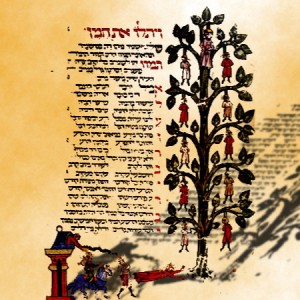Was Haman Hanged or Impaled in the Book of Esther?
 With attention focused on the Book of Esther as the Jewish holiday of Purim approaches, I decided to take a quick break from building “The Unabridged Bible” to address the violent details of the antagonist’s death in the story, because they are interesting in their own right, and are also a prefect demonstration of the two-fold challenge of Bible translation.
With attention focused on the Book of Esther as the Jewish holiday of Purim approaches, I decided to take a quick break from building “The Unabridged Bible” to address the violent details of the antagonist’s death in the story, because they are interesting in their own right, and are also a prefect demonstration of the two-fold challenge of Bible translation.
The issue is this: As part of the battle between Mordecai (the hero) and Haman (the villain), Haman plans Mordecai’s death in a particular fashion, but in the end the instrument of death is turned on Haman himself.
According to the NRSV, Haman’s wife suggested (verse 5:14) that “a gallows fifty cubits [seventy-five feet] high be made … to have Mordecai hanged on it.” But the JPS translation offers instead, “Let a stake be put up … to have Mordecai impaled on it.” Verse 7:10 details the plot reversal: the King’s men either “hanged Haman on the gallows” (NRSV) or “impaled Haman on the stake” (JPS).
So which is it? Was it a gallows or stake? And was Haman hanged or impaled?
There are two questions here, as there always are with matters of translation. The first is what the original Hebrew means. The second is how best to say that in English.
The Hebrew verb is talah, which means “to hang.” And the Hebrew noun is eitz, “tree” or “wood.” So it looks straightforward. It was a tall piece of wood, and what they did to Haman was hang him on it.
Surprisingly, though, the way to say that in English is not “hang Haman,” because even though the verb “hang” in general encompasses a wide variety of acts, it has a very narrow meaning in English in connection to killing someone: putting the person’s head through a loop of rope and hanging the rope, not the person, from some horizontal structure. (Imagine a comic. The caption is “she told me to hang the wash.” The drawing shows shirts in a noose.)
In other words, “Haman was hanged from a gallows” means that a vertical post was constructed to support a horizontal crossbar; a noose was hung from that crossbar; and Haman was suspended by the neck from that noose. There is almost no chance that this is what the text intended. (This specialized meaning of “hang” used to have its own past tense: “hanged,” as opposed to “hung.” Most people don’t preserve that distinction any more.)
But if not in stereotypical western-movie fashion, how was Haman suspended from the wooden post? Here, unfortunately, we don’t have a clear answer. One reasonable possibility is that he was impaled by the post. Another is that he was crucified in some fashion. We don’t know for sure. (The evidence comes in part from Greek translations, and in part from other Greek writing about the capital punishment practices of the Medes.)
So what do we do about a translation? “Hanged on a gallows” is clearly wrong. It wasn’t a gallows as we think of it, and he wasn’t hanged. “Impaled on a stake” might be right. Certainly “stake” is better than “gallows.” But “impaled” adds a detail that might not be right, and, even if it is, goes beyond what the text actually tells us.
My suggestion, then, is “they hung Haman on the stake.” At least to my ear, this conveys the original image of Haman being attached in some direct manner to a tall piece of wood from which he hung.
What do you think?



